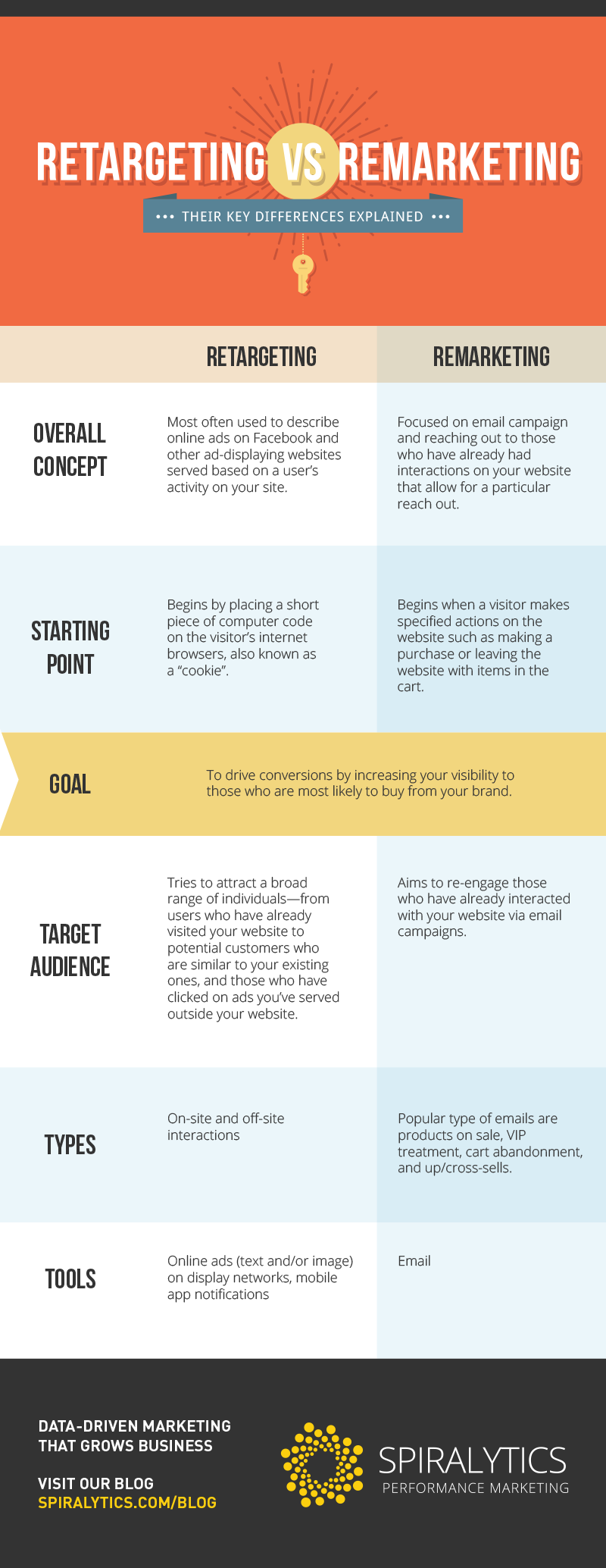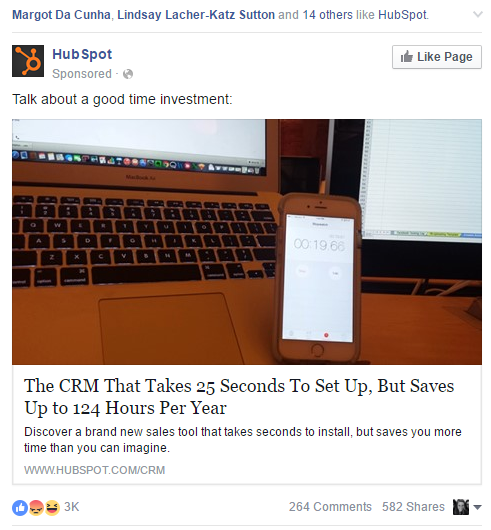Digital marketing is a complex web of marketing principles, strategies, tools, and technologies that takes time to master. No wonder, you may find yourself getting confused as you try to wrap your head around some marketing terms. Case in point: retargeting versus remarketing.
Retargeting and Remarketing are two buzzwords that marketers often hear and use interchangeably. While they may have some similarities, they are different concepts and are applied in a variety of ways, too.
To help you sort out the confusion, here’s an infographic that you can use as a guide to retargeting and remarketing. You’ll find valuable information about the differences and similarities between the two marketing strategies, so you’ll have a better understanding of when or how to do them..

What Is Retargeting?
Retargeting is used to describe online ad placements, in text and image format, often based on a user’s activity on your website. Once users visit your site, a cookie is set on their internet browser, and this cookie lets you serve them ads on other websites they visit.
Part of the appeal of retargeting is that it can be done through large third-party networks like the Google Display Network (GDN) and AdRoll—allowing advertisers to reach users on millions of websites online. These days, it’s also possible to do retargeting via social media like Facebook and Twitter.
You can find loads of retargeting statistics that show the value of implementing retargeting campaigns, but here’s some preview:
- Only 0.5% of first-time web visitors would opt into email offers, but 9.5% of returning visitors would do. That’s a 1,912% more chance of getting people to convert through retargeting.
Incidentally, conversion is the top reason why you need to include retargeting in your campaigns. This marketing strategy can influence conversions as it makes your brand visible to people who have previously interacted with your brand.
A good example of a retargeting ad is this Facebook placement from HubSpot.

Image Source: Wordstream.com
The Facebook ad retargets a previous website visitor of HubSpot. Because the customer to whom the ad is shown has already been to the HubSpot website and therefore already knows who or what HubSpot is all about, the company didn’t bother using branded copy and visuals.
Instead, the company focused on addressing a possible reason the website visitor didn’t purchase the CRM on the first visit, which is the time it will take to set it up. HubSpot also used the picture of a timer to emphasize this and went further by saying how much time the user can save by using the tool.
According to the Search Engine Journal (SEJ), retargeting falls into two categories: “on-site” and “off-site” events. On-site interactions are the more popular category of retargeting because they involve serving ads to individuals who have already visited and interacted with your website (meaning, they’ve already expressed interest) but have yet to make a purchase. Retailers often do this by displaying ads of a product that the visitor has taken a look at.
On the other hand, off-site interactions happen with customers who have not yet interacted with your website but are similar to previous customers. This can be done by targeting their web searches or interactions they’ve made on content with distributed content such as your Facebook page or mobile app.
Some of the other well-known platforms for retargeting aside from GDN and AdRoll include Perfect Audience, Triggit, and ReTargeter. These platforms are capable of installing website cookies on your behalf, tracking your website visitors and their behavior, and networking with display ad groups so that you’ll have more sites to advertise to on the internet.
What Is Remarketing?
Remarketing is the process of re-engaging customers using email campaigns. It’s probably Google that caused much of the confusion between the terminologies, as the search engine called its retargeting tools “Remarketing Tools.”
Beyond the confusion, Google dynamic remarketing can raise your conversion rate by as much as 161% compared with if you were only to run typical SEM ads.
So, in a sense, remarketing still is a form of retargeting, as its primary goal is to bring back traffic to your website.
According to a study by AgilOne, the most effective marketing emails are a result of remarketing tactics. Some of these include personalized emails on discounts to check out an abandoned cart (54%) and new customer welcome offers (61%).
The takeaway here is that email remarketing campaigns must be focused on increasing conversions for those who have already made meaningful interactions with your website, such as adding items to their cart or signing up as a user. You can also use remarketing to make upsell or cross-sell offers.
While remarketing email campaigns are effective in retail, there are some creative ways to use the technique. For example, Dropbox sends the following email a few days after a new customer signs up for their service but does not install the app on their computer.
 Image Source: CrazyEgg
Image Source: CrazyEgg
For Dropbox, no install means no business, so it is critical for them to encourage customers to install the app. The brand used a straightforward remarketing email campaign to do just that.
The Verdict: Retargeting or Remarketing?
Mike Arsenault of Rejoiner said, “There’s really no reason to choose” between retargeting and remarketing. It is clear that both tactics can work well together to give you more conversions.
You can use display ads retargeting to nurture potential customers’ interest, and then complement it with email remarketing to convert customers who are already in the later stages of your sales funnel.
Just allow us to leave one final recommendation, which is also the general rule in marketing—that is, the approach or channel you use has to match the type of message you’re sending or the audience you’re targeting.
With that said, use email remarketing to serve more content or information to people who are most likely to buy from you, but use ad retargeting to engage past visitors and new prospects who may only be starting to show interest in your brand.
Get an in-depth look at how to become effective at B2B retargeting!





